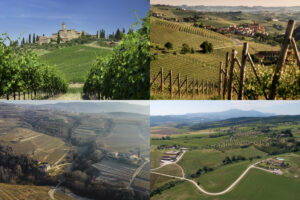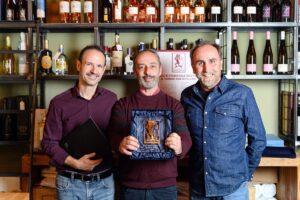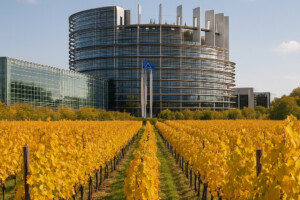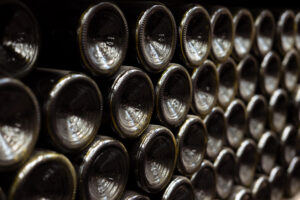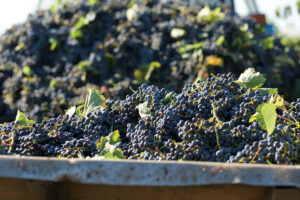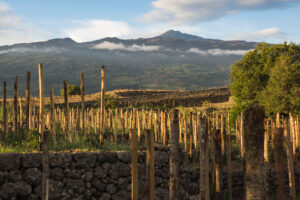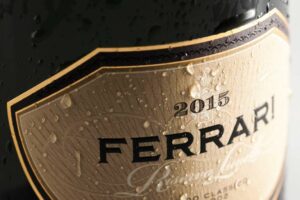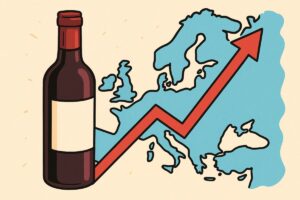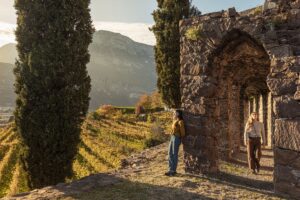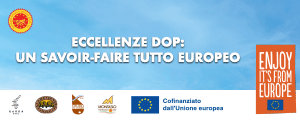In recent years, one of the most popular themes in the wine world is that of autochthonous (or indigenous) grapes: everyone talks about them, everyone exalts them, and everyone preaches of their radiant future. But are we really sure that the hundreds of autochthonous Italian vineyards will really have a place on international markets? According to the results of a survey conducted by WineNews (one of the most consulted Italian websites by wine enthusiasts), and by “Vinum Loci” (the exhibition on antique and autochthonous wines to be held in Cormòns, Gorizia, 20-24 October, organized with Udine e Gorizia Fiere, www.goriziafiere.it), the answer is no.
The opinion, in fact, of most producers, wine enthusiasts, and sector workers appears to be that only a restricted circle of autochthonous varieties can represent a winning solution for “Made in Italy” wine abroad, while the rest are destined to remain enological “curiosities”, reserved for a very local territorial consumption of small niche buyers. Maurizio Tripani, the director of Udine e Gorizia Fiere, explained: “We were the first, in 2001, to start talking about autochthonous varietals, when it was still an unknown discussion topic. Instead, now that the theme has spread rampantly, it is time to make some serious reflections, both in order to better inform consumers as well as to protect those who produce these grapes. It is important to trace out a line of demarcation between autochthonous that could be truly interesting for the market, and those that, instead, are destined to become a sort of monument to the past”. According to the study by WineNews and “Vinum Loci”, the top varieties most adored by Italians are Sangiovese, Barbera, and Nebbiolo, the symbols of the two leading regions in Italian winemaking, Tuscany and Piedmont. Following behind these are Lambrusco, Montepulciano d'Abruzzo, Aglianico, Dolcetto, Nero d'Avola, Tocai and Sagrantino di Montefalco. These results consecrate tradition, but also the “nouvelle vogue” that is Italian, the emerging zones that, in recent years, have elevated their autochthonous vineyard production to very high levels of quality, particularly in Abruzzo, Campania, Umbria and Sicily.
As for the classification among the Italian native varieties, top choices are Greco, Primitivo, Verdicchio, Vermentino, Zibibbo, Teroldego and Marzemino. As for the classification according to sales, the undisputed leader is Sangiovese, followed by Montepulciano d’Abruzzo, and Barbera. These three are then followed by Prosecco, Nero d'Avola, Primitivo, Aglianico, Corvina, Dolcetto, and Vermentino. There are 350 Italian varietals that have been cultivated since ancient times (i.e. autochthonous grapes) that are known and catalogued. But according to some estimates there could exist even more than 1,000. Besides representing a huge well of biodiversity to study and to protect, they are also the main element of distinction for Italian viticulture and enology. A true competitive advantage that the rest of the world envies, especially at a time when the market is showing its first signs of fatigue in respect to an almost embarrassing organoleptic standardization of wines. Given this, however, does it mean that all autochthonous wines are destined to become the new protagonists of the market, guaranteeing financial success for their producers and the territory as a whole? Currently, there are only about 10-20 varieties that have had great success. They are truly confirmed on the local and international markets: Sangiovese, Sagrantino, Nebbiolo, Barbera, Montepulciano d'Abruzzo, Aglianico, and Nero d’Avola, just to name a few.
Then are between 100 to 200 with great potential, but who have not had the force to impose their identities. Among these are Vermentino, Verdicchio or Fiano, as well as Falanghina and Greco. Just below these are cultivations that are considered complementary, among the most noted being Colorino, Canaiolo, and also Perricone and Nerello Mascarese. And, finally, there are the “relic” varieties: those that have been recently recuperated but little is known about their cultivational prospectives, as well as those with a very limited, local diffusion, like, for example, Pignolo and Timorasso, and which often represent more of a curiosity for producers than a return in sales. So, if this is the case, can a winemaker really aim towards producing autochthonous wines without running too many risks? Certainly, but in order to be successful there must be large funds that can be invested in technical experiments for cultivation and winemaking processes, as well as resources for promotional campaigns that can compete with those that already exist on the market. It is not enough to blindly say yes to all autochthonous varieties, but choices must be made to meet the tastes of consumers.
Today, the choice to promote autochthonous wines can be explained by communicating the added value in a bottle of autochthonous wine, in terms of territory, culture, and history. Autochthonous wines don’t need to be safeguarded, but must follow the politics of marketing that favors a new relation with consumers in order to win the challenges of the international market.
The Event “Vinum Loci”: the national exhibition of antique and autochthonous wines, 21 – 24 October, Gradisca d'Isonzo (Gorizia)
”Vinum Loci”, the national exhibition of antique and autochthonous wines, a niche event that, however, turns Gorizia into an important center for national winemaking, has taken place since 2001. Alongside tastings led by experts and sommeliers, there are many other events, conventions, and round table discussion. Particularly noteworthy this year is the scientific meeting (20 October, Cormòns): the common intent is to give more value to autochthonous wines and grapes, with the resolve that they are not reduced to “silent varieties” that disappear forever, taking with them an inestimable agrarian patrimony as well as cultural and historical. This is the alarm that has been expressed by Professor Attilio Scienza, one of the top international experts in the field, from the viticulture studies at the University of Milan. Many important researchers, producers, enologists, journalists, sommeliers, and restaurant owners will be attending the event together with consumers and wine enthusiasts.
Copyright © 2000/2025
Contatti: info@winenews.it
Seguici anche su Twitter: @WineNewsIt
Seguici anche su Facebook: @winenewsit
Questo articolo è tratto dall'archivio di WineNews - Tutti i diritti riservati - Copyright © 2000/2025










